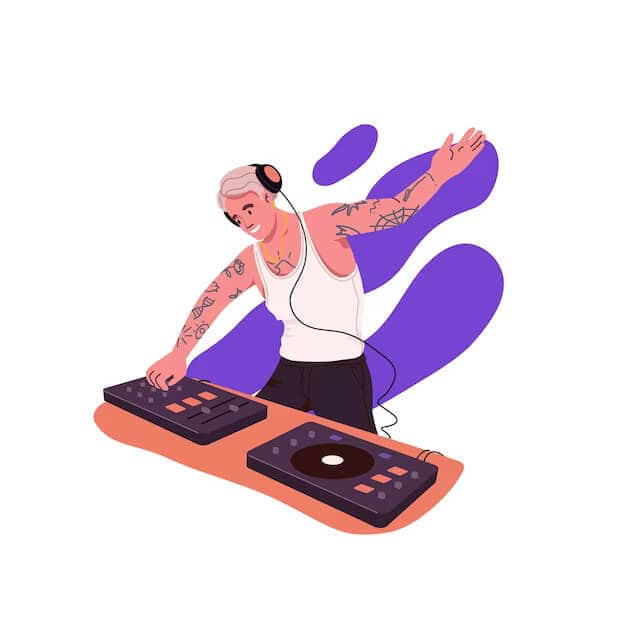If you’ve ever had a dream and want to become a DJ, now is the perfect time to begin. In this article, we’ll discuss how to become a DJ and the equipment you’ll need.
We’ll also explore the various types of DJs and answer common questions, such as whether prior experience is necessary. Let’s dive into the world of DJing and begin your journey.
What exactly is a DJ?
A DJ is the person in charge of playing music at parties, nightclubs, bars, festivals, event venues, or on radio stations. The term “DJ” comes from “disc jockey,” originally describing the act of handling vinyl records to queue up the next track.
Nowadays, the term “DJ” encompasses various roles related to music selection and vinyl record handling. There are three primary types of DJs today, each with its distinct skills, experiences, and opportunities.
Club DJs
The most common type of DJ can be found at clubs, bars, parties, and various events. Their main focus is on mixing and beatmatching to keep the dance floor alive.
Club DJs use vinyl turntables, CDJs, digital controllers, or other playback devices to play tracks from their collections at live events. Some of them even add live elements like samplers, synthesizers, or vocals into their performances.
Club DJing is an art that involves selecting music that matches the crowd’s energy and seamlessly blending it into an engaging stream of tracks. Well-known club DJs are in high demand for their ability to control the energy on the dance floor and keep the crowd entertained throughout their sets.



